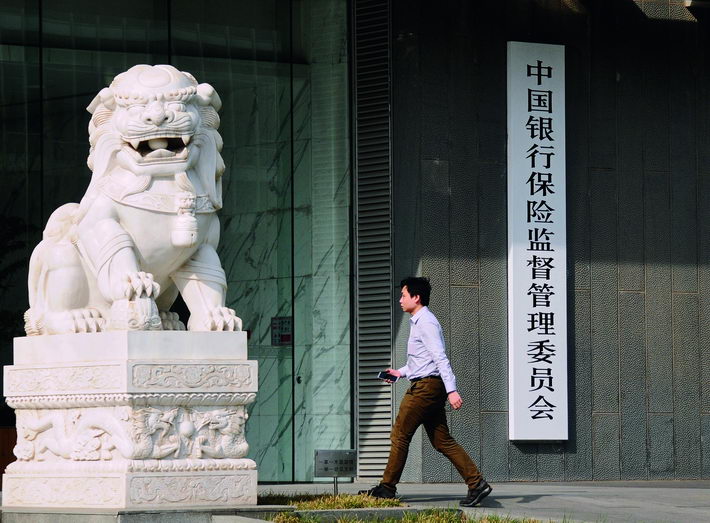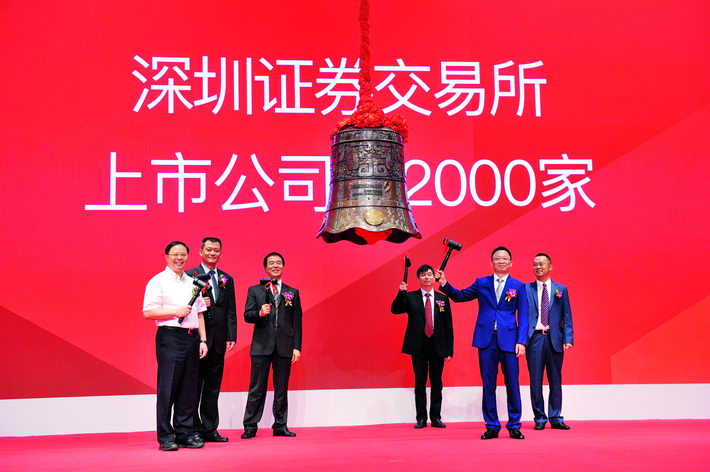China’s economy is transforming from high-speed growth to high-quality development. The financial sector needs corresponding adjustment. To build a modern economy, synergetic development of the real economy, scientific and technological innovation, modern finance and human resources are required. Modern financial systems are a necessary facet of any modern economy. Today, China is reforming its financial sector for better development of the real economy and tighter control of financial risks.
Serving the Real Economy
Finance is a lifeline for the real economy, and the two are tightly intermingled. Past experience shows that if development of the financial industry diverges from that of the real economy in the long term and to a great extent, development won’t be sustainable, and the result will always be large accumulations of risks that ultimately explode into a crisis. Over the last two years, financial problems of “distraction from the real economy,” “idle funds” and “internal circulation” have emerged in China’s economy. The most outstanding problem is a startling contrast between the high-speed growth in the financial sector and the contraction in manufacturing. A large volume of funds circulating within the financial system remain reluctant to get into the real economy, which stretches the credit chain of finance to serve the real economy, raises the financing cost of manufacturing enterprises and makes financial services less available.

Readers experience audio publications created by Himalaya FM. Shanghai Pudong Software Park Incubator has incubated several enterprises with an estimated market value of hundreds of millions of U.S. dollars including this audio publication provider. IC
To make finance better serve the real economy, improvements should be made in methods of macro control, patterns of financial services, and strategies for finance to better fulfil its function. One major task is handling the relationship between direct financing and indirect financing. Direct financing should be given greater priority. A couple of years ago, the proportion of direct financing by non-financial enterprises increased considerably. Direct financing in aggregate financing to the real economy accounted for 24 percent in 2015 and 23.82 percent in 2016. Influenced by changes in the financial market, however, the proportion of direct financing plummeted in 2017. Bond financing and non-financial corporations’ domestic equity financing accounted for only 2.3 percent and 4.5 percent, respectively. Promoting direct financing aims not only to de-leverage and lower corporate costs, but also to promote innovation-driven development. Regulatory authorities have implemented new measures such as releasing innovation bonds and green bonds, urging National Equities Exchange and Quotations (NEEQ) and ChiNext to offer more services for emerging industries and businesses, and enacting regulations encouraging equity incentive.
Promoting Financial Regulation
In recent years, considerable financial innovations such as internet finance have swept across China. Due to past restrictions on regulation, issues such as loopholes, conflicts of interest and arbitrage have been chronic and persistent. Financial risks in small scale have repeatedly broken out. In response, the Financial Stability and Development Committee under the State Council of China was organized in July 2017 to strengthen planning and coordination of regulation and provide institutional guarantee for preventing systemic financial risks. In April 2018, the China Banking and Insurance Regulatory Commission was founded, ending the old regulatory system comprised of the People’s Bank of China and three regulatory commissions respectively for banking, insurance and securities. This measure has eliminated considerable conflicts of interest in regulation. It is conducive to better preventing and eliminating financial risks, protecting the legitimate rights of financial customers and safeguarding the stability of the financial sector.

Visitors in an exhibition hall of Ant Financial in Hangzhou in southeastern China. On June 8, 2018, Ant Financial announced another round of financing of US$14 billion, which will mainly be used to improve Alipay and its partners’ ability to provide inclusive financial services for global customers and small and micro businesses. VCG
In the future, regulation on financial function and conduct will be highlighted. Regulation on function focuses on the activities of finance instead of on financial institutions, which means that financial services, regardless of the form or institution providing them, so long as they have the same function, will follow the same rules. Although names of financial institutions vary, functions of those organizations are relatively stable and mainly consist of payment and settlement, collecting money, allocating resources across time, space and industries, risk management, price discovery and reducing information asymmetry. Conduct regulation is supplementary financial regulation from another perspective. It focuses on whether a specific conduct of an organization or individual involved in financial activities complies with the rules. In practice, factors such as fraud, exorbitant interest rates, highly complex financial derivatives, ignorant and fearless customers and lack of effective regulation all contribute to faster accumulation of risks. Implementation of conduct regulation can greatly ease the situation.
Deepening Financial Reform
Presently, China’s financial reform on the macro level focuses on financial organizations, and the goal is to improve the structure of modern financial enterprises and corporate governance structure. Modern enterprise structure features transparent ownerships, clear rights and responsibilities, separation of government functions from enterprise management and scientific management, among which the principle of transparent ownerships is core. Consequently, optimizing shareholder structure in financial institutions has become a fundamental task of financial reform. Typical corporate governance structure demands a sound relationship between shareholders, board of directors, managers and other stakeholders. It also requires effective incentive and restraint mechanisms, internal control mechanisms, risk management mechanisms and external supervision mechanisms.

On April 8, 2018, the China Banking and Insurance Regulatory Commission was founded in Beijing, ending the old regulatory system comprised of the People’s Bank of China and three regulatory commissions respectively for banking, insurance and securities. VCG
At the macro level, the core of financial reform is streamlining institutions and systems including the interest rate liberalization mechanism, the RMB exchange rate formation mechanism and the goal and sequence of opening up of the financial sector. The removal of restrictions on RMB deposit rates symbolized that interest rate marketization has completed nominally. But full interest rate liberalization needs to be built on a benchmark interest rate mechanism and an interest rate transmission and regulation mechanism, through which the price of funds can be determined by the market, ensuring the market plays the decisive role in allocation of resources. Momentum for reform is always created through opening up, which is a core experience of China’s development. The RMB exchange rate formation mechanism, capital account convertibility and RMB internationalization are three major targets for China’s financial opening up. What are the relations between them? There is no established precedent for a big developing nation like China. So, China needs to continue its careful exploration and move forward steadily.

On July 12, 2017, Hunan GOKE Micro-electronics Joint Stock Co., Ltd. went public at ChiNext of Shenzhen Stock Exchange. It was the 2,000th company to be listed on the Shenzhen Stock Exchange. VCG
The author is an associate research fellow with the National Academy of Economic Strategy under the Chinese Academy of Social Sciences.